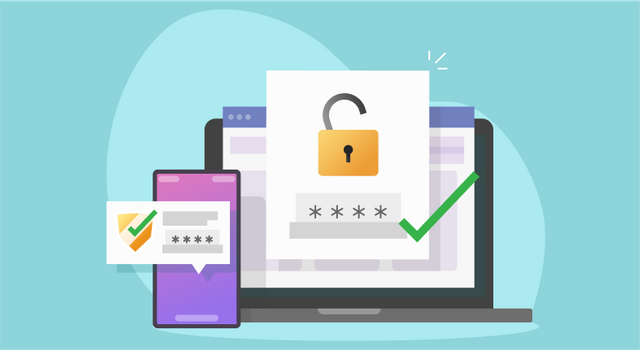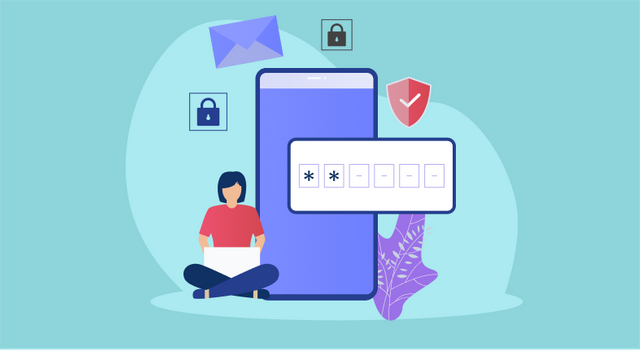Enterprise security is increased by single sign-on services by enhancing authentication processes with additional requirements. However, SSO service usage is frequently disregarded. Businesses must realise how important it is to implement effectively.

In today's digital world, the quantity and diversity of apps available are constantly growing. Keeping track of every combination of login information used by employees, executives, and clients might easily become difficult given the number of systems that firms utilise. A popular method for offering dependable access to several applications from any location and on any device is single sign-on (SSO).
The definition of a single sign-on service
SSO, or more specifically single sign on (SSO), is a method of authentication that enables users to securely log in to many different apps and websites with only one set of credentials. A single sign-on service occurs when a user logs in to one app and is then automatically signed in to all other apps, regardless of the user's platform, software, or domain. A single sign-on service is one where the user just needs to sign in once.

One can immediately access YouTube, AdSense, Google Analytics, and other Google apps after logging into Gmail, for example. Similar to this, closing all Google programmes or Gmail locks a user out of all Google services at once, creating a single logout.
How does it function?
Single sign-on informs software of user authentication status by transmitting a "token" with consumer information. Identifiers, usernames, and email addresses are often sent.
SSO authentication has 3 steps:
When a user visits a website or app, software transmits a security/authentication token to top sso providers. The app transmits the username or email address as a token to SSO to identify the user. If the programme recognises the user's username or email address, it sends the token and authentication request immediately.
The SSO service checks if the user has been authenticated. If so, the SSO service continues. If a user isn't authorised, the SSO service displays a pop-up or screen requesting a username and password. Authentication can be done using username/password or one-time passwords or two-factor authentication (2FA). After authenticating the user, the SSO service sends the app a security certificate token, allowing it to give access. SSO service passes token to app or web service via user's browser.
Because of their established relationship, the app recognises the confirmed authentication status and grants access to its services. So, identity access management is safe.
Various Single Sign On Service Types
Single sign-on allows users to access multiple apps with a single username and password or multi-factor authentication. This is Federated Identity Management's architecture. Open standard protocols specify how service providers (SPs) and identity providers (IdPs) share identification and verify data for SSOs to work.
Let's compare SSO services.
SAML allows user authentication and authorisation data to be transferred between encrypted domains. SAML-based single sign-on services involve user, identity provider, and service provider interactions.
In Kerberos-based SSO, authentication credentials generate a ticket-granting ticket (TGT). TGT retrieves service tickets for other apps without resubmitting credentials.
An end user needs a smart card with sign-in credentials for smart card-based SSO. The user doesn't need to reenter usernames or passwords when using the card. SSO smart cards store certificates or passwords.
What Benefits Do Single Sign On Services Offer?
Simple benefits of single sign on services, often known as sso services, include easier authentication and fewer passwords to remember. However, these benefits might increase productivity across the board for the company. Let's examine the advantages that single sign-on services offer to businesses and their personnel.
It increases IT and employee efficiency
Single sign-on saves time and resources. A single password for all apps reduces support calls. Employees can use their SSO login credentials on any device and web browser without compromising security.
Strengthens security
Single sign-on diminishes security is a misconception. The argument assumes a compromised master password affects all associated accounts. Users create better passwords because they only need to remember one. These tips reduce password theft.
Single sign-on services encourage stronger passwords. It prohibits people from reusing passwords. Using a single password for many sites makes passwords easier to remember. This reduces the risk of cyberattacks on businesses by keeping fewer user credentials.
Passwords should be supported by two-factor authentication (2FA) or multi-factor authentication (NinjaAuth), which verifies the user's identity. When a user logs in with a username and password, 2FA requires an extra verification factor, such as a fingerprint or a phone app code. Application access requires additional authentication parameters.
Summing it Up
Single sign-on services give organisations more centralised control by allowing them to give each team member and user a single set of credentials. Single sign-on is also user-friendly. When a user enters an SSO-integrated app or website, the SSO service confirms the user's authentication or helps them through the procedure.
Multi-factor authentication (MFA) should be used for secure applications or websites. NinjaAuth by 500apps is a premier cloud-based single login service that may help you protect confidential data, preserve business functionality, and grow your business.